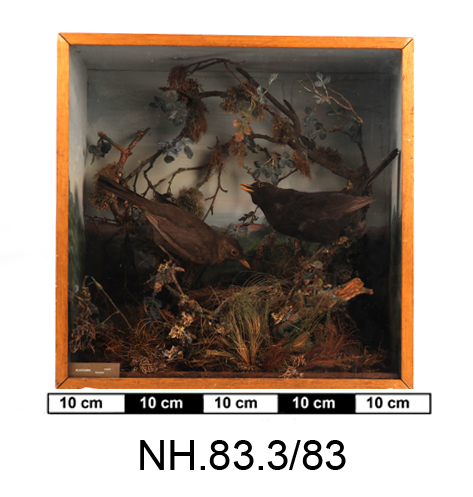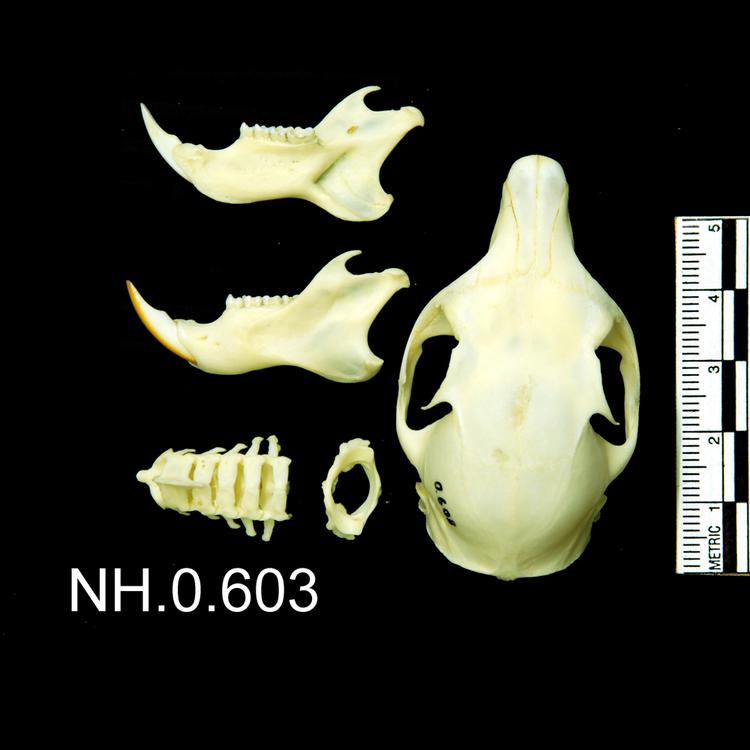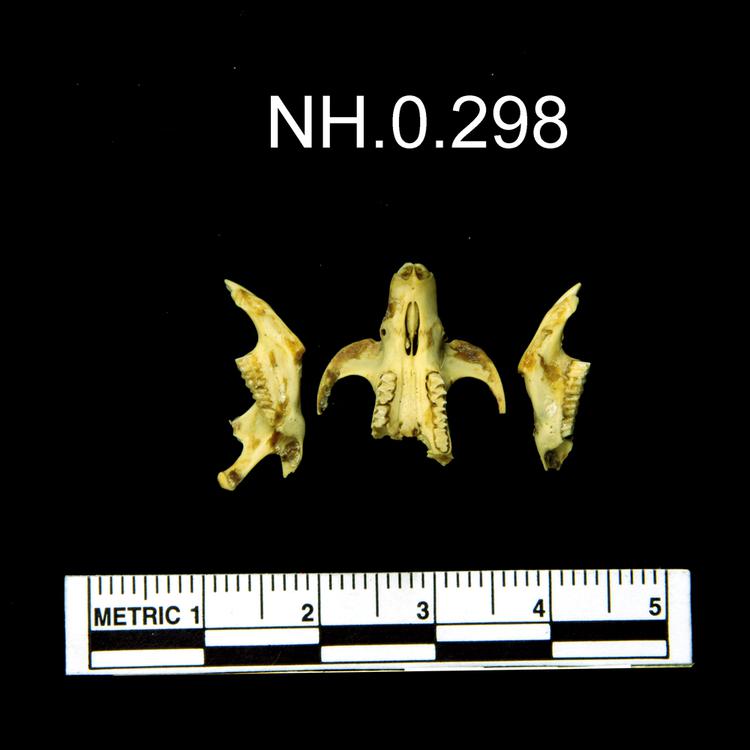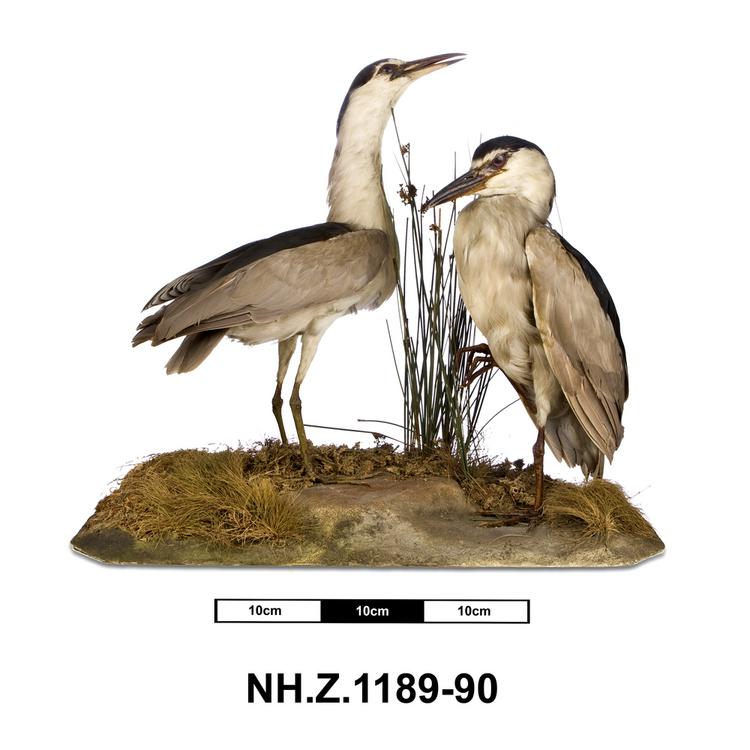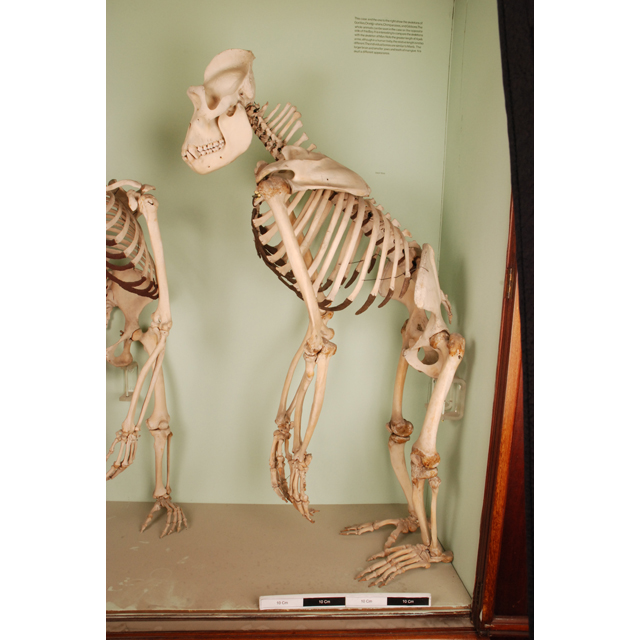
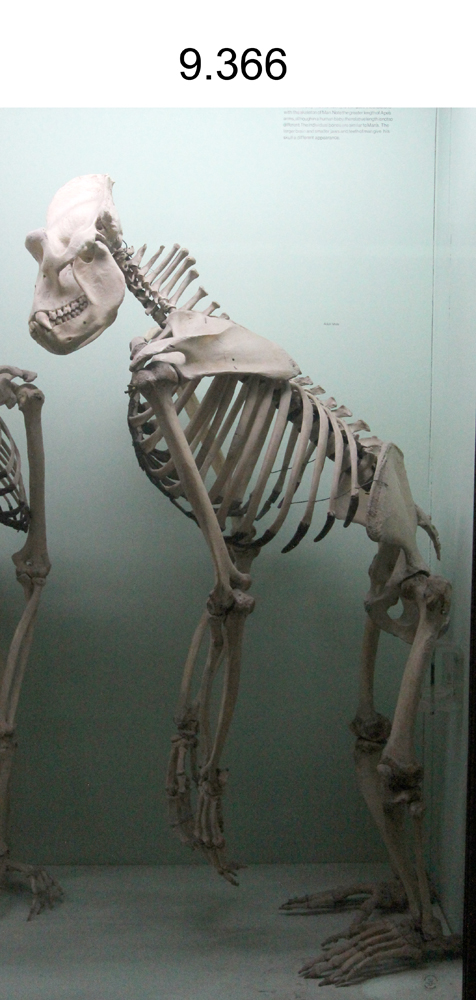
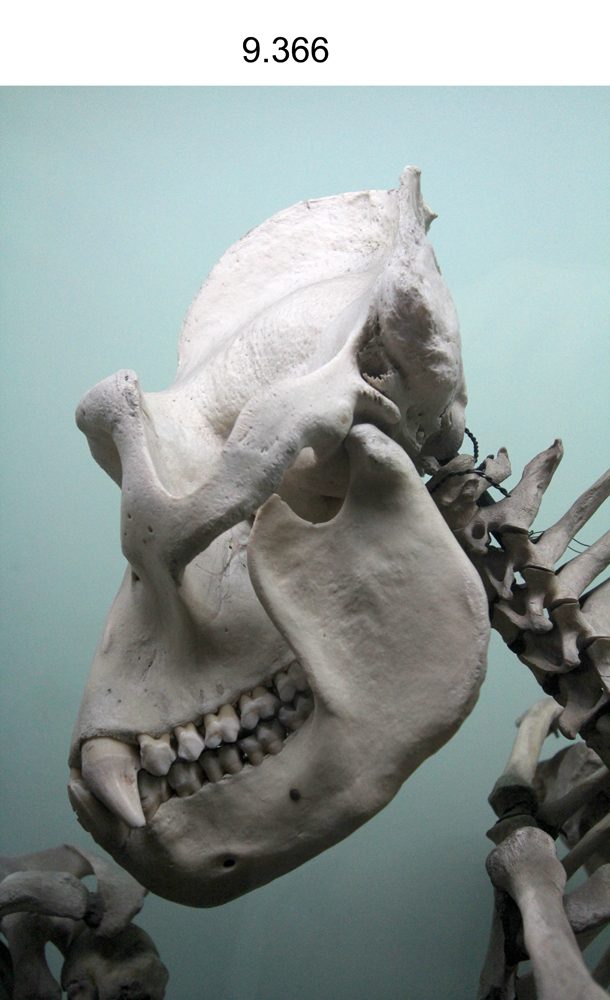
Ribcage, spine and pelvis of Western Lowland Gorilla (Gorilla gorilla) by Edward Gerrard.
This male Gorilla skeleton was purchased in 1909 from the famous London taxidermy company Edward Gerrard & Sons. The specimen was mounted in an upright position and doesn't reflect the usual knuckle-walking stance of the living animal. An upright posture was commonly used when mounting great apes in the 19th and early 20th Century. The intention may have been to make specimens look more imposing or perhaps to highlight the similarities between the other apes and humans. Alternatively, it may reflect the early lack of understanding of the behaviour of live Gorillas, relying on human posture to inform the mounting process. Many specimens from Gerrard & Sons were obtained from the natural death of animals at the London Zoo, which was near to their studios in Camden. However, close examination of this specimen suggests that it may have been shot in West Africa, rather than being collected alive for a zoo. Two ribs and the right shoulder blade were damaged and later repaired using painted plaster. Although Gorillas are now protected by law, wild populations are still endangered by illegal hunting for their meat, habitat destruction from logging and mining and from diseases like Ebola.



